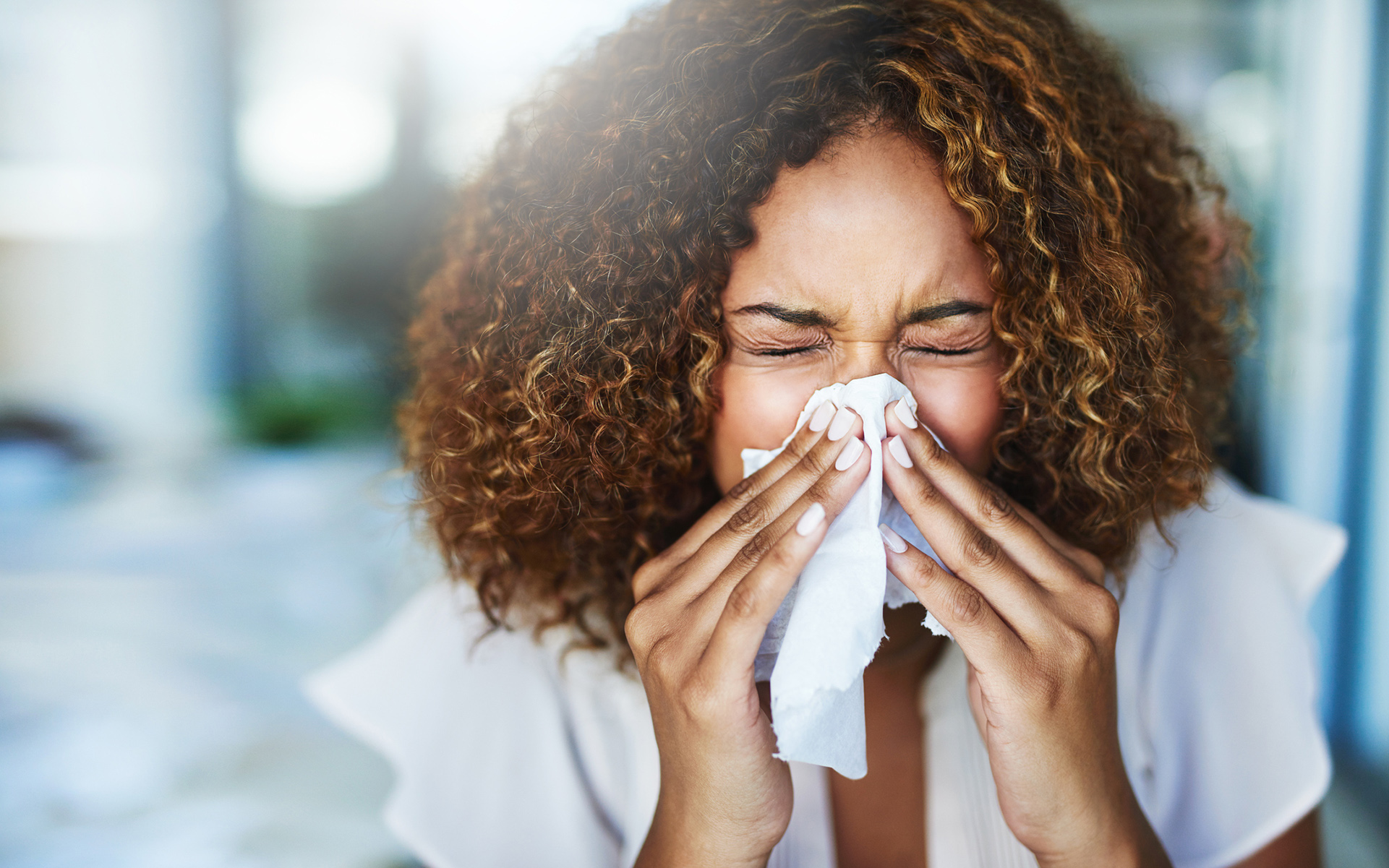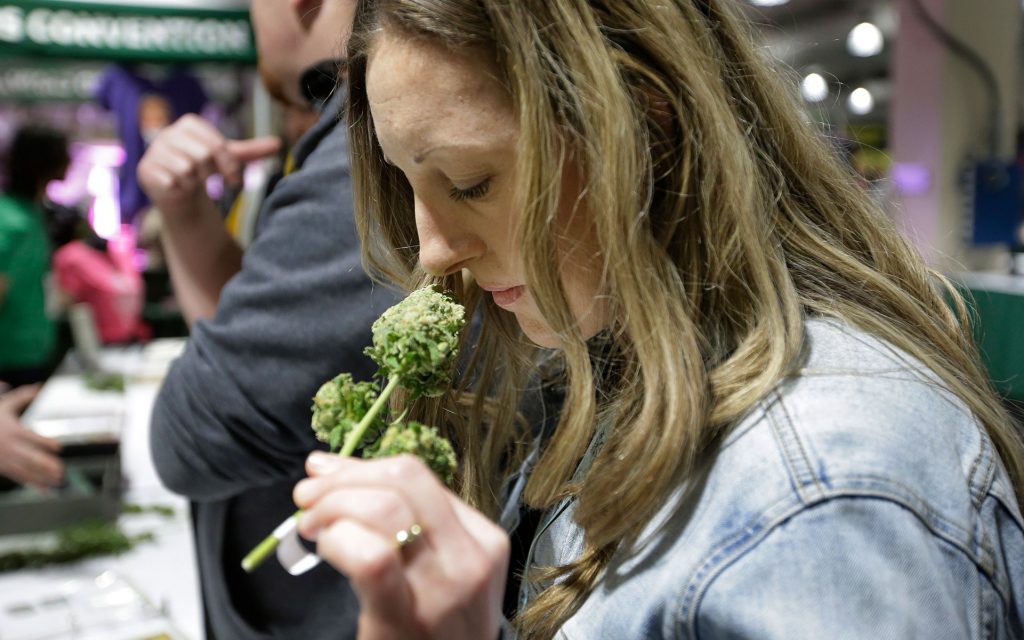
What types of marijuana make you sneeze?
It’s spring, and with the introduction of the COVID-19 vaccines, we can finally make our now maskless faces available to the world. While it is exciting to breathe new in the flavors that terpenes release from flowers and plants in nature, for those struggling with seasonal allergies, it means that they may be hit by a wall of irritants.
Pollen from flowers and grasses often causes seasonal allergy symptoms such as sneezing and red, itchy eyes. When it comes to the cannabis plant, there is plenty of research that suggests how marijuana can fight allergies as an anti-inflammatory agent, both topically and for breathing problems. However, there is much less information available on how and why marijuana can cause allergies.
People in high exposure environments, such as trimmers, often report itchy eyes and runny noses when handling the fresh plant material directly. These symptoms mimic allergic reactions, but there is no clear answer when it comes to the exact compounds in cannabis that could be causing it.
“I can’t say I’ve ever had an exposure that made me sneeze, though sticking my face in a big bag of diesel definitely tickles my nose,” says cannabis expert and comedian Ngaio Bealum of Netflix’s Cooking on High.
Shop and smell the flowers. Order on Leafly.
The question is as complex as the cannabis plant itself. There are thousands of specific strains and dozen of ancestral families. Inside each bud are dozens of flavor molecules known as terpenes, as well as the cannabinoids – THC, CBD, and other molecules that also influence the effect. Each strain provides a unique chemical fingerprint of compounds that each person’s uniquely tuned immune system responds to.
Possible allergens: cannabis pollen, terpenes
Cannabis is a dioecious plant, which means that it occurs in both male and female forms. Male cannabis plants produce pollen, a common cause of seasonal allergies. Therefore, it makes sense that cannabis pollen can cause allergic reactions in some people. But unless you are a breeder, you are unlikely to come into contact with much cannabis pollen in nature.
When it comes to what can cause allergies from breathing, inhaling, ingesting, or touching female marijuana plants and flowers, the conversation gets a lot more complicated.
“Like any natural substance, cannabis or cannabis components can certainly cause allergic symptoms in some sensitive people, ranging from very mild such as sneezing to severe skin reactions or even breathing reactions,” says Uwe Blesching, Co-Founder and Chief Science Officer of Cannakeys and author of your CBD: THC ratio for cannabis.
“Yes, of course people can be allergic to cannabis, but the challenge is to determine if it’s a real allergic reaction to cannabis, or if it’s a reaction that mimics allergic symptoms, or if it’s one allergic reaction to potential symptoms are pollutants that made it into the facility? “
Personal chemistry against pesticides, fertilizers, mold?
Blesching goes on to explain that allergens associated with exposure to cannabis, like a skin rash, can be caused by other underlying causes, such as something a person has eaten.
Or they can be caused by a pesticide, synthetic fertilizer, or a number of different materials that either covered or absorbed the plant.
“… every time I touched Dutch Treat, my arms went up.”
Sara Payan, Public Education Officer, The Apothecarium
If it were possible to narrow down the cause of cannabis-related allergies to the plant itself, the next step would be to clarify which element or elements of the plant’s more than 800 natural components could be causing the irritation.
“Ultimately, what matters is the individual’s susceptibility to any or a combination of compounds they have been exposed to that causes the trigger,” says Blesching. “At this point, I don’t think anyone can say which components are most likely to be the culprit. Terpenes are certainly a top contender, but so are the rhizomes and cannabinoids. “
A closer look at terpenes
I first grew cannabis during the great doldrums of 2020 and found that – like the fragrant heirloom tomatoes I also grew in my garden – I developed a mild rash when my arms touched my weed plants. Many people who work in the cannabis industry have similar stories, and recent studies examining cannabis allergies mainly focus on those in the industry who are exposed to high levels of plant material over a long period of time, such as: B. Trimmer.
“Through my experience [an allergic reaction to cannabis] depends more on your personal make-up than on individual types, ”says Sara Payan, education officer at the Apothekarium. “For example, we would fill the jars from our bulk before we had pre-packaged cannabis and every time I touched Dutch Treat my arms would tear.”
connected
A guide to cannabis allergies and symptoms
A Leafly editor got the sneeze every time he took off his super-fragrant Squirt strain after the 2020 harvest.
Dr. Laurie Vollen of Naturally Healing MD says that she knows that cannabis allergy has been reported in the scientific literature but has not seen it in the patients she treats, who comprise more than 13,000 people.
Terpene allergy tests are missing
Allergies to cannabis, she says, are also difficult to determine via traditional skin sampling because the tests must be done using raw material. Cannabis terpenes – especially the unique and delicate monoterpenes – are most prominent in fresh plants. However, studies show that “this approach is practically impossible to standardize, mainly due to unpredictable differences in composition and possible contamination with other allergens in the raw material. ”
For example, monoterpenes boil off at room temperature – that’s the bright, pungent scent you smell on a pot farm.
“The terpenes are the most volatile part of the plant. So when you do a test you have to go to great lengths to make sure the terpenes are there and that’s not what they’re trying to do, ”she says. “You’re trying to connect [cannabis allergies] to the THC and the CBD. “
Other plant allergies that cause cross-reactivity
Although cannabis use dates back to antiquity, the first description of a cannabis allergy appeared in 1971. It was a 29-year-old housewife who suffered from an allergic reaction after smoking a “marijuana cigarette”. At the time, THC was considered a potential culprit. Today, studies suggest a link to cross-reactivity with other things that cause allergies.
“If you’re allergic to cannabis, you may have a cross-allergy to another plant, and that suggests it’s not the phytocannabinoids because you don’t see those in other plants, but the terpenes,” says Vollen.
connected
Allergies buggin ‘out? Cannabis can help or hurt
Blesching speculates that the key to cannabis causing allergies is likely to be related to an individual’s sensitivity rather than an association with particular strains or ancestral families. Typically, people who already have side effects to other plant species are most likely to be affected by cannabis allergens.
“People whose noses are at war with plants are the ones, ‘Oh yeah, I sneeze when I’m around,'” he says. “I think something is wrong with people’s sensitivity scale. Some people’s immune systems are so overactive that they react to nature. I think the pathology lies with the patient and not with the culprit, who is a piece of nature.”
Do you make certain stresses sneeze? Comment below.
Ellen Holland
Ellen Holland is an Oakland-based journalist who has been writing about cannabis since 2013. As the former managing editor of Cannabis Now magazine, her new book “Weed: A Connoisseur’s Guide” will be published in October.
Show article by Ellen Holland
By submitting this form you are subscribed to Leafly news and promotional emails and agree to Leafly’s Terms of Use and Privacy Policy. You can unsubscribe from Leafly email messages at any time.



Post a comment: